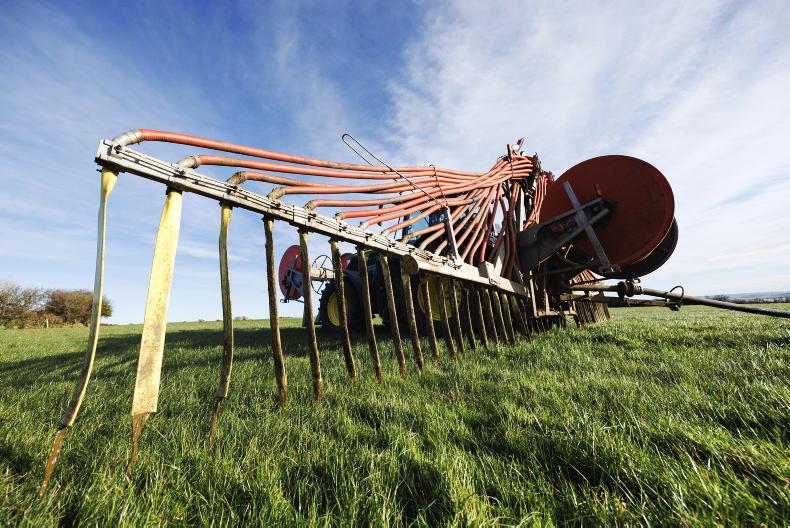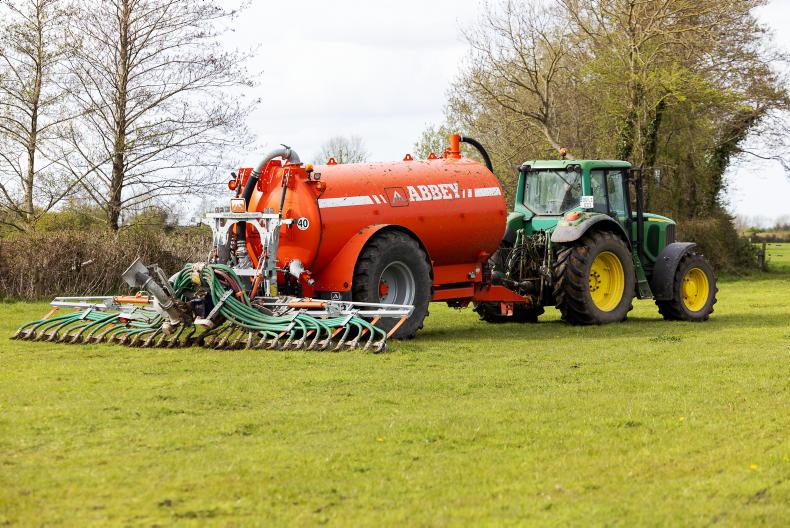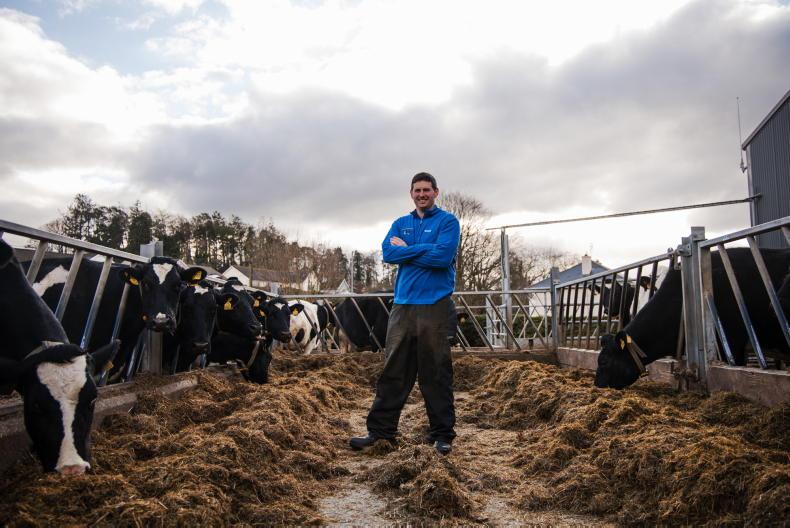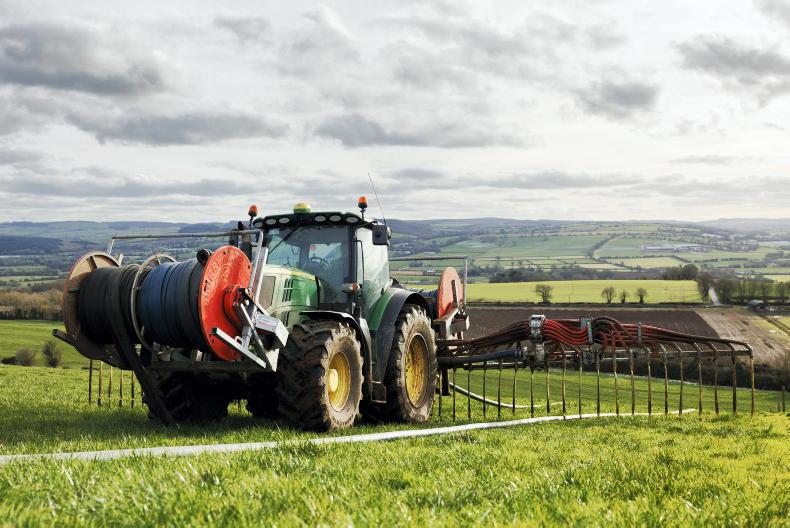It is estimated that in the region of 15,000 farmers in Ireland may have to change the way in which their slurry is applied in 2025.
New rules under the good agricultural practice for protection of waters regulations, which come into effect from 1 January 2025, require farmers with a grassland stocking rate of between 100kg/ha and 129kg/ha organic nitrogen to apply all slurry on their holding (produced and imported) using low emissions slurry spreading equipment (LESS).
This means that for such farmers, slurry will no longer be permitted to be applied using a splash plate.
The use of LESS equipment is already mandatory for farmers with a grassland stocking rate of 130kg/ha and higher organic nitrogen (including derogation farmers), pig farmers and for slurry applied to arable lands, where the slurry is not being incorporated into the soil within 24 hours.
Farmers with a grassland stocking rate of less than 100kg/ha organic nitrogen will continue to be permitted to use a splash plate.
Number of farmers
It is estimated that these rules will concern in the region of 15,000 medium-stocked holdings. This is based on 2023 grassland stocking rate figures and while the requirement for 2025 is based on 2024, grassland stocking rate data it is not expected to be too dissimilar.
There were approximately 26,000 farmers stocked at or above 130kg/ha organic nitrogen who have been required to apply slurry using LESS equipment in 2024, in addition to pig and arable lands as described above.
Farmers with cattle can get an estimate of the volume of organic nitrogen produced on their holding in 2024 via their agfood.ie account. This only takes account of the volume of organic nitrogen produced up to October 2024.
It generally takes a period of about a month for end-of-year figures to be finalised, therefore farmers close to the 100kg/ha organic nitrogen limit will have to err on the side of caution if applying slurry once the prohibited application period passes.
It is also important to note that the figures included do not take account of the changes to nitrates excretion rates, which are still to be ratified as part of the mid-term review.
Other livestock
It should be noted that the record of nitrogen (N) and phosphorus (P) produced by grazing animals only takes account of bovines. Farmers must therefore calculate the volume of N and P produced by livestock such as sheep, equines and poultry themselves.
Table 1 details excretion rates for livestock other than bovines.
New movement recording rules
From 1 January 2025, the movement or export of organic nutrients between holdings must be recorded within four days of the movement occurring. It is the responsibility of the exporter of organic nutrients to record the movement via agfood.ie.
Importers who receive organic nutrients between 1 January and 30 June 2025 must verify the movement via the agfood.ie facility by 14 July 2025.
Importers who receive organic nutrients from 1 July to 31 December 2025 must verify such movements by 14 January 2026.
Northern Ireland
The rules outlined above only apply to farmers in Ireland. Farmers in Northern Ireland also have to apply slurry via LESS equipment under certain situations as outlined below.
Since 1 February 2020, all anaerobic digestate must be spread using LESS equipment. Another rule also introduced in 2020 requires slurry on all derogation farms to be applied via LESS equipment after 15 June each year.
All contractors in Northern Ireland must use LESS technologies since 1 February 2021, while on 1 February 2022, a new rule was introduced under the revised nutrients action programme (NAP) regulations which requires cattle farms with 200 of more livestock units and pig farms with a total annual livestock manure nitrogen production of 20,000kg or more to use LESS equipment.
Importantly, the rules state that “where it is not practical, because of slope, to spread on a field using LESS, slurry can be spread using an inverted splash plate in that field. A record of the field number and the reason for spreading using a splash plate must be kept for inspection”.
The Irish Farmers Journal understands that more rules are up for debate in the upcoming review of the NAP.








SHARING OPTIONS